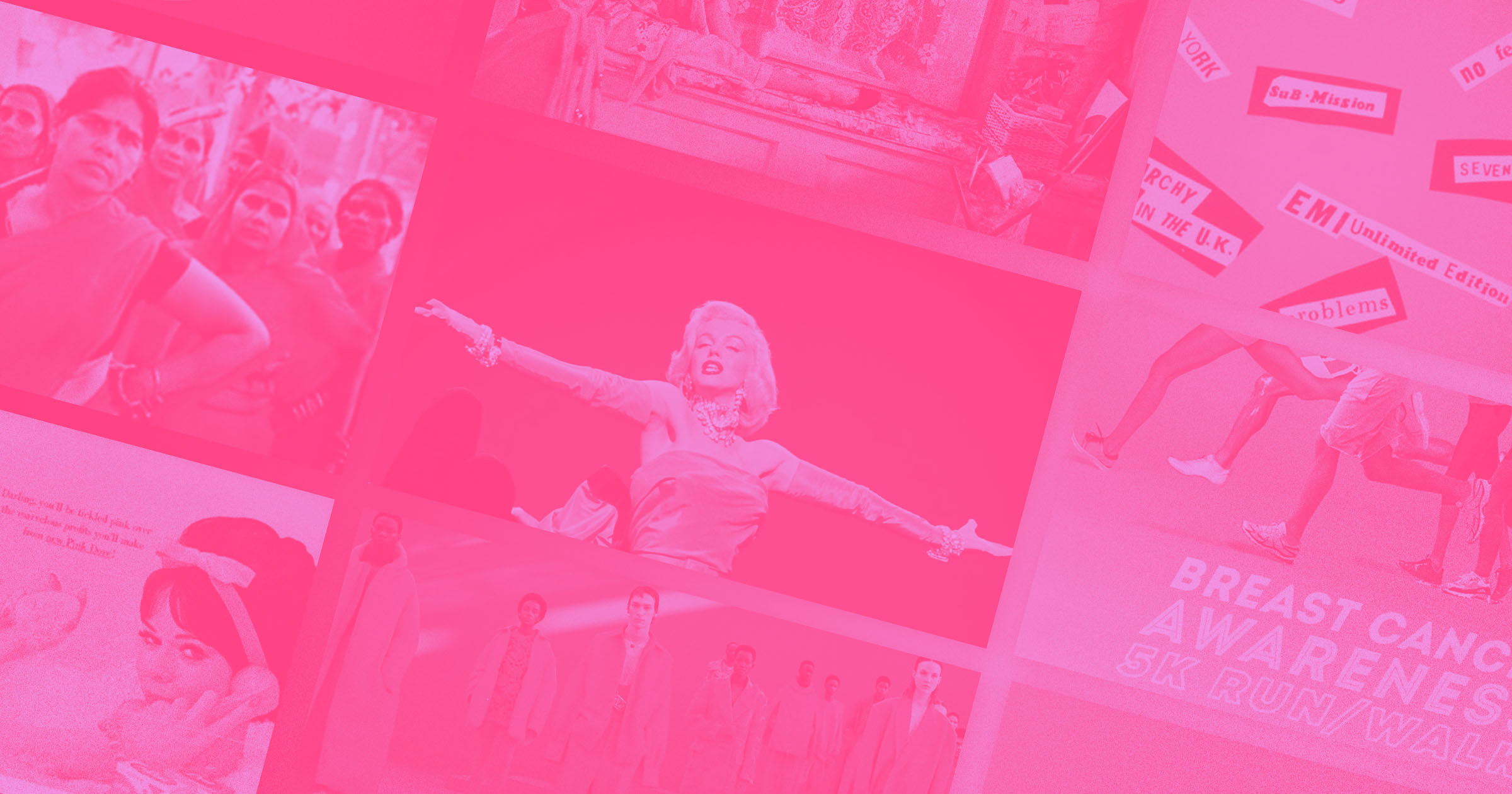Glossier is one of the trendiest brands out there, with their millennial-pink-on-everything aesthetic and their pink boilersuit-clad employees.
Their launch and their marketing hit at the perfect time to ride the wave of the millennial aesthetic and “cool girl” vibes that were everywhere in 2014.
Unlike a lot of the brands from the same time period, however, Glossier is still here and still pink. While others dropped the look as the trend cycle moved on, Glossier managed to find ongoing success without changing its message or its aesthetic.
Their marketing can teach us a lot about how to use social media to connect with audiences and how to ride the wave of a trend without being swamped by it. “They’re so well-marketed that you want to believe, because the idea of minimalist makeup that encourages you to be in your own skin is so appealing,” quoted a fan in a 2016 Fader article.
They used that marketing to make themselves one of the most successful DTC brands in the world, valued at more than $1.2 billion. These are the key moves their team used to make that happen.
They started with great data about their audience
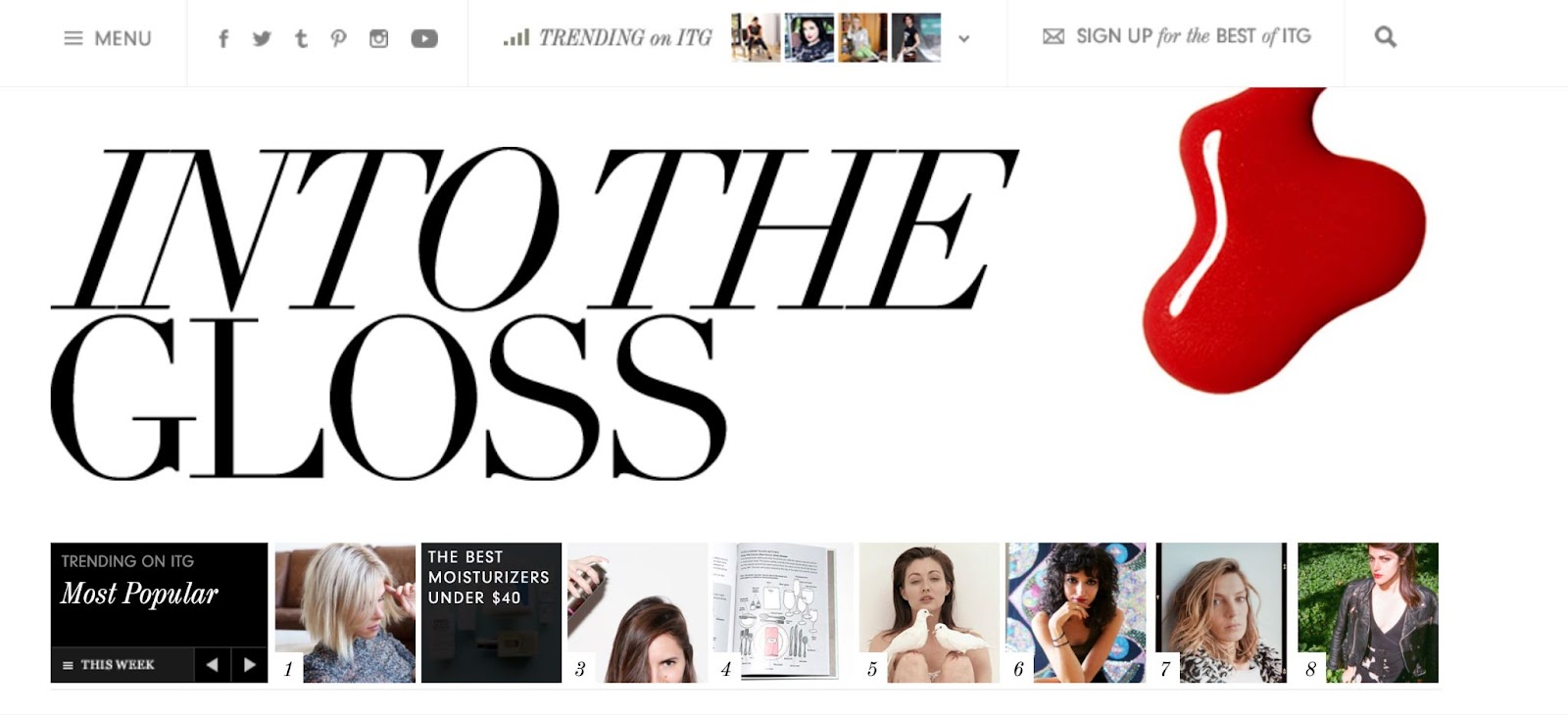
Glossier started off its life as a brand with a huge advantage — the thousands of followers they already had from Into the Gloss (ITG). Of course, having a large follower base wasn’t enough, it was how they used those followers that made the difference.
Years of comments and messages from followers provided an invaluable wealth of first-party customer data for Glossier to mine for information. In a Refinery29 article about the brand launch, Glossier founder Emily Weiss describes “years of interviewing inspiring women and listening to what influential ITG readers think about beauty.” They used this customer data to better understand their audience and target their marketing more effectively than most emerging brands could.
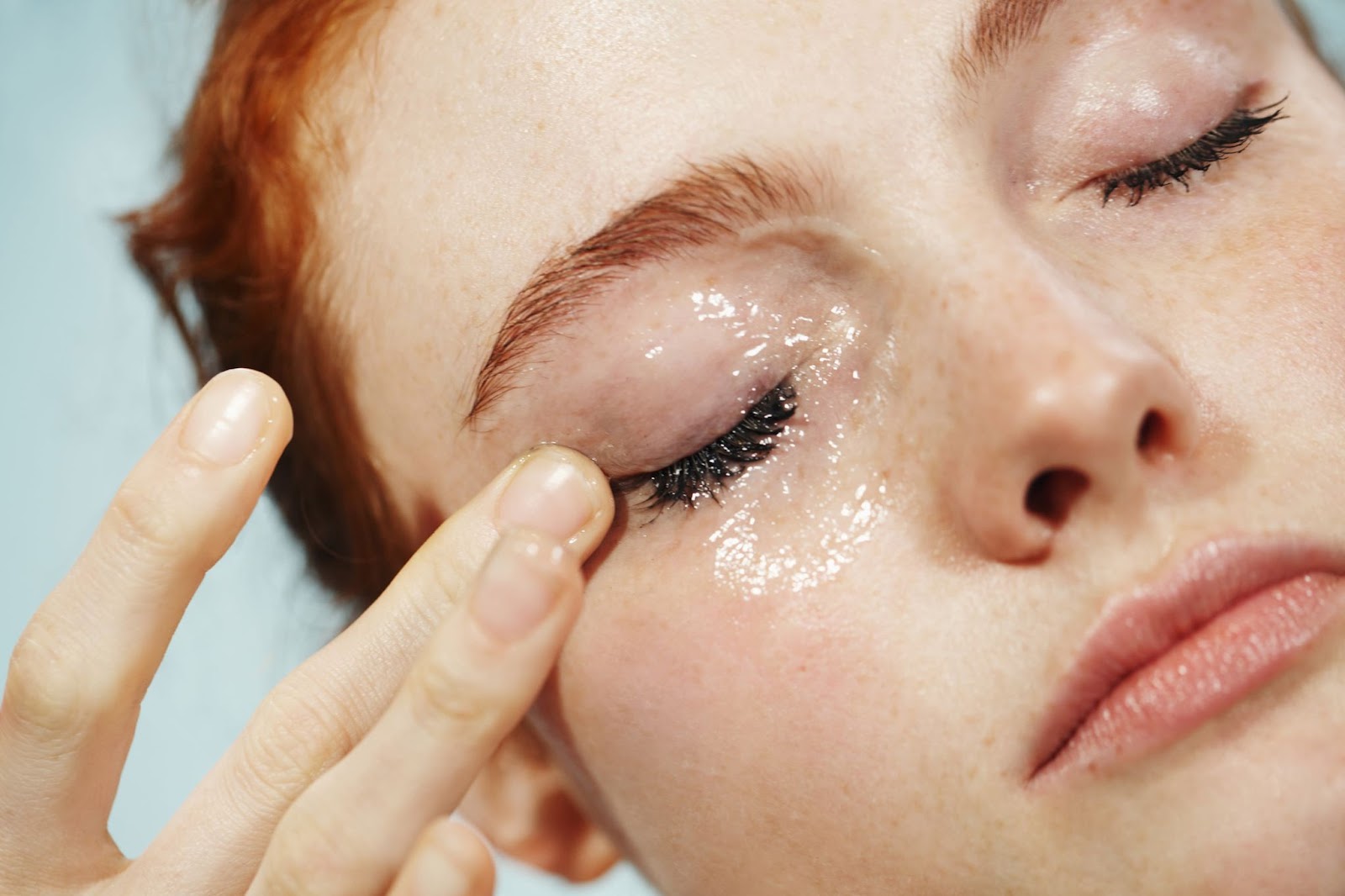
They also actively solicited feedback and participation from their audience to get them invested. In 2016, they asked their readers, “What is your dream face wash?” and created the Milky Jelly Cleanser in response.
Maybe they used the responses to develop the cleanser, or maybe it was just a clever marketing ploy to get their readership invested (their posting of the retro Milky Gel pens to their Instagram feed long before the survey might suggest the latter). Whichever it was, it worked, and the Milky Jelly has been one of their top sellers since it launched.
They enlisted customers to be brand advocates
Glossier successfully doubled down on this strategy as the brand grew. Most of their marketing was focused on peer-to-peer recommendations in real life and on social media. They got around Millennial mistrust of marketing by getting their customers to market to their own friends and followers.
“We're in an era where people are predominantly looking to peer-to-peer connection and community to make beauty purchasing decisions,” Emily said. She says the Glossier approach to marketing aims to foster “‘C2C (customer to customer)” and “G2C (Glossier to customer)” connections.
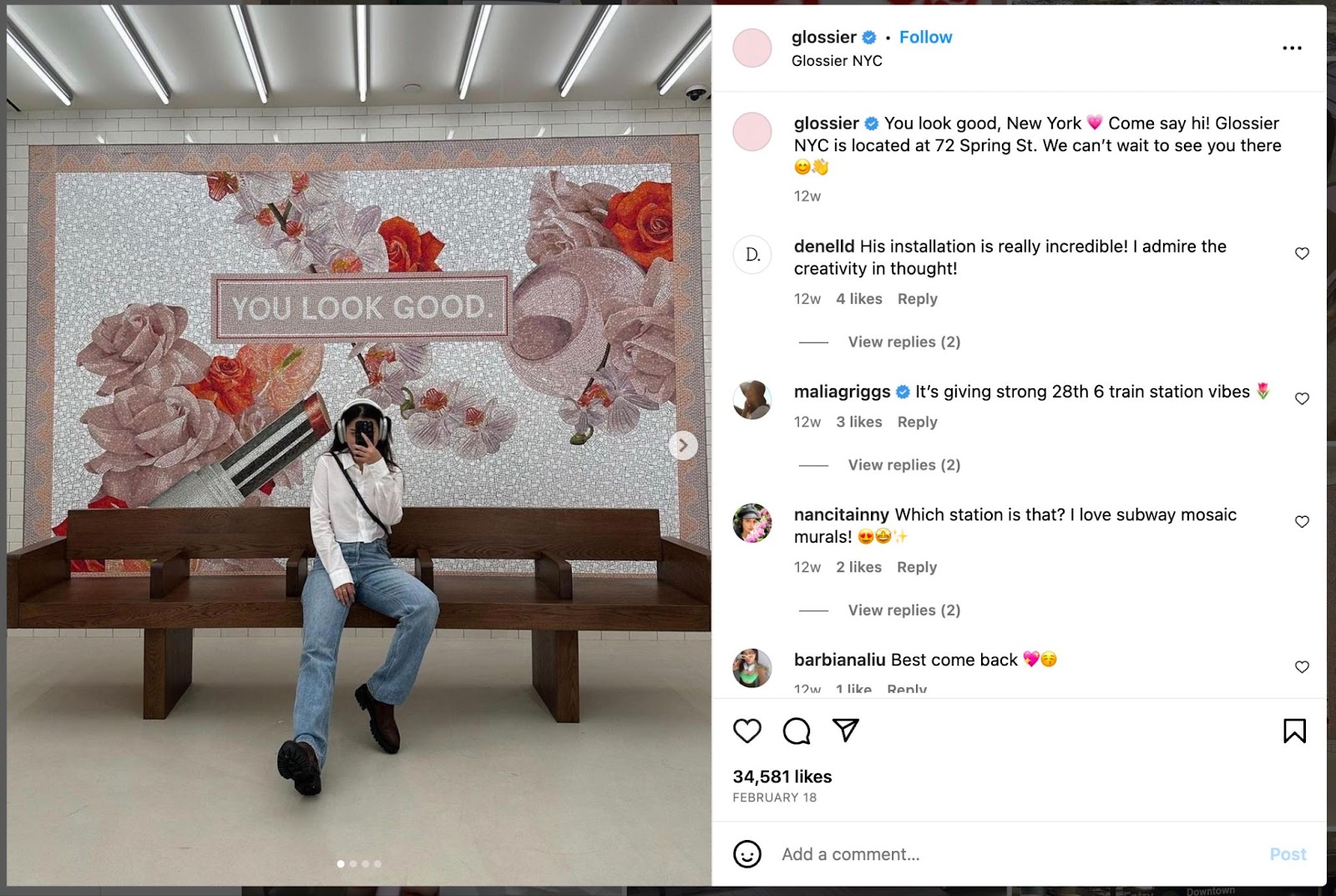
By interacting with fans on social media — often re-sharing content and posting customer images directly to their own feed — Glossier builds personal connections with their fans. Those fans and influencers go on to promote Glossier to their friends and followers, both organically and through their robust referral program.
They got customers to identify with their brand
It’s interesting that one of the originating stories behind the brand isn’t beauty products or the science of skincare, but brand marketing. In a WIRED interview, Emily talks about wondering why beauty brands were struggling with younger audiences. “I went through that exercise of looking across 20 or 10 beauty brands, thinking about whether or not I would buy that sweatshirt, wear that sweatshirt… I just kept coming up with the answer ‘no’,” she says.
She set out to make a brand whose sweatshirt Millennials would wear, and Glossier’s thirsty Instagram comments and perpetually sold-out merch show that she succeeded. What this quote demonstrates is that Emily knew how important relatability and connection were to her audience. She wanted her customers to relate so strongly to her brand that they would not just buy it, but happily advocate for it by repping their merch.
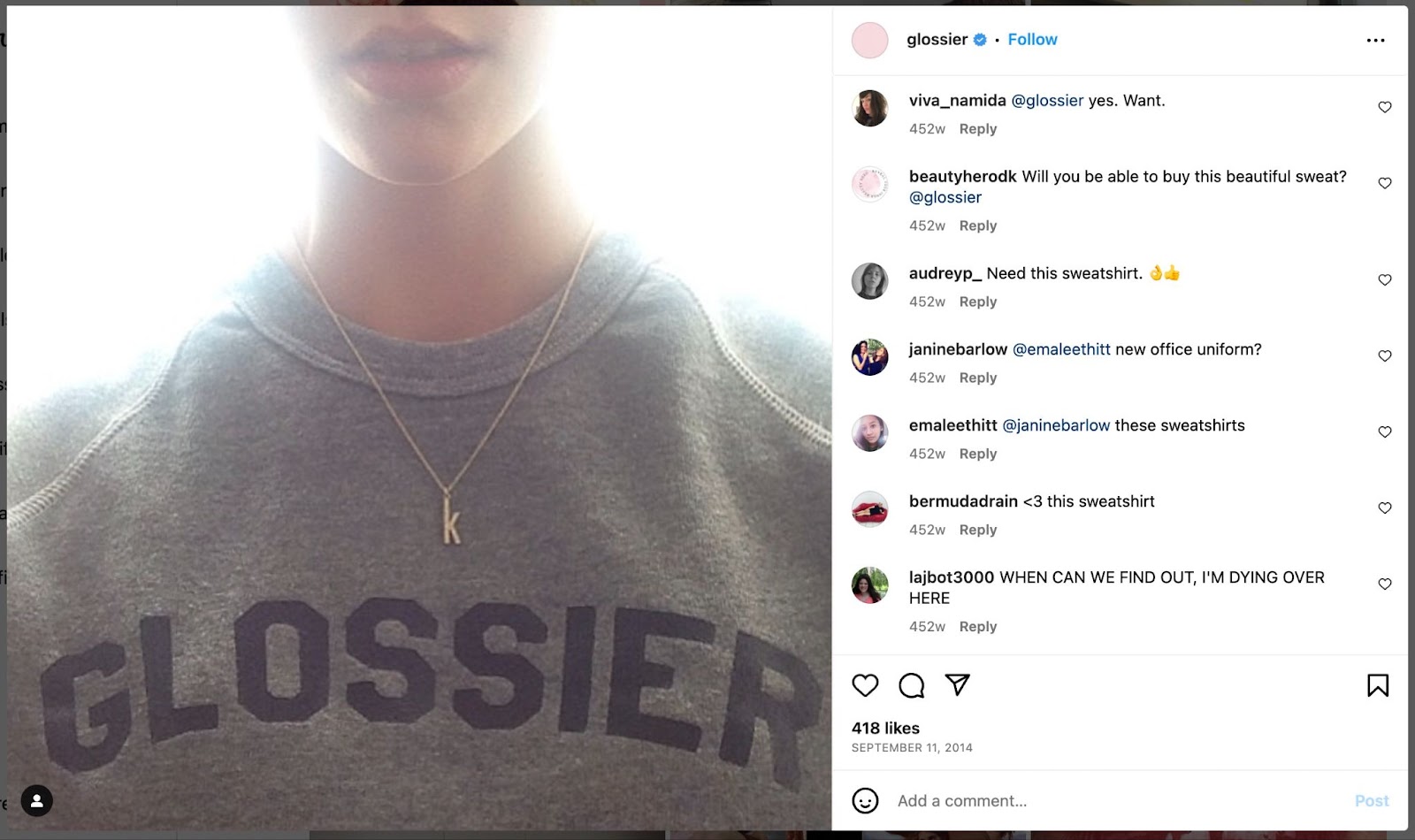
They achieved this strong customer identification by positioning Glossier among the masses as a sort of grassroots answer to her readership’s unmet beauty needs. Emily used the brand’s history as a review-focused publication to support the message that she was an outsider to the mainstream beauty industry and she understood her audiences’ needs so much better because she was one of them.
“Who are we? We are you”
- Emily Weiss, Glossier founder
“Our credo is to follow our gut and rethink products, creating exactly the items that we want to see,” Emily wrote in her brand launch announcement on Into the Gloss. “Who are we? We are you, listening to everyone, absorbing all of this information over the years, and trying to get at the core of what beauty is — and needs — in 2014. Glossier begins with YOU.”
The early marketing messaging was all about aligning Emily with her readership. She was just making the products she wished she had, just like the ones ITG fans were wishing for. Glossier’s Instagram page posted raw, casual shots of Emily sketching logos, finding color inspo, and developing the products. This transparency made Emily more relatable and made Glossier’s followers feel like part of the development process.
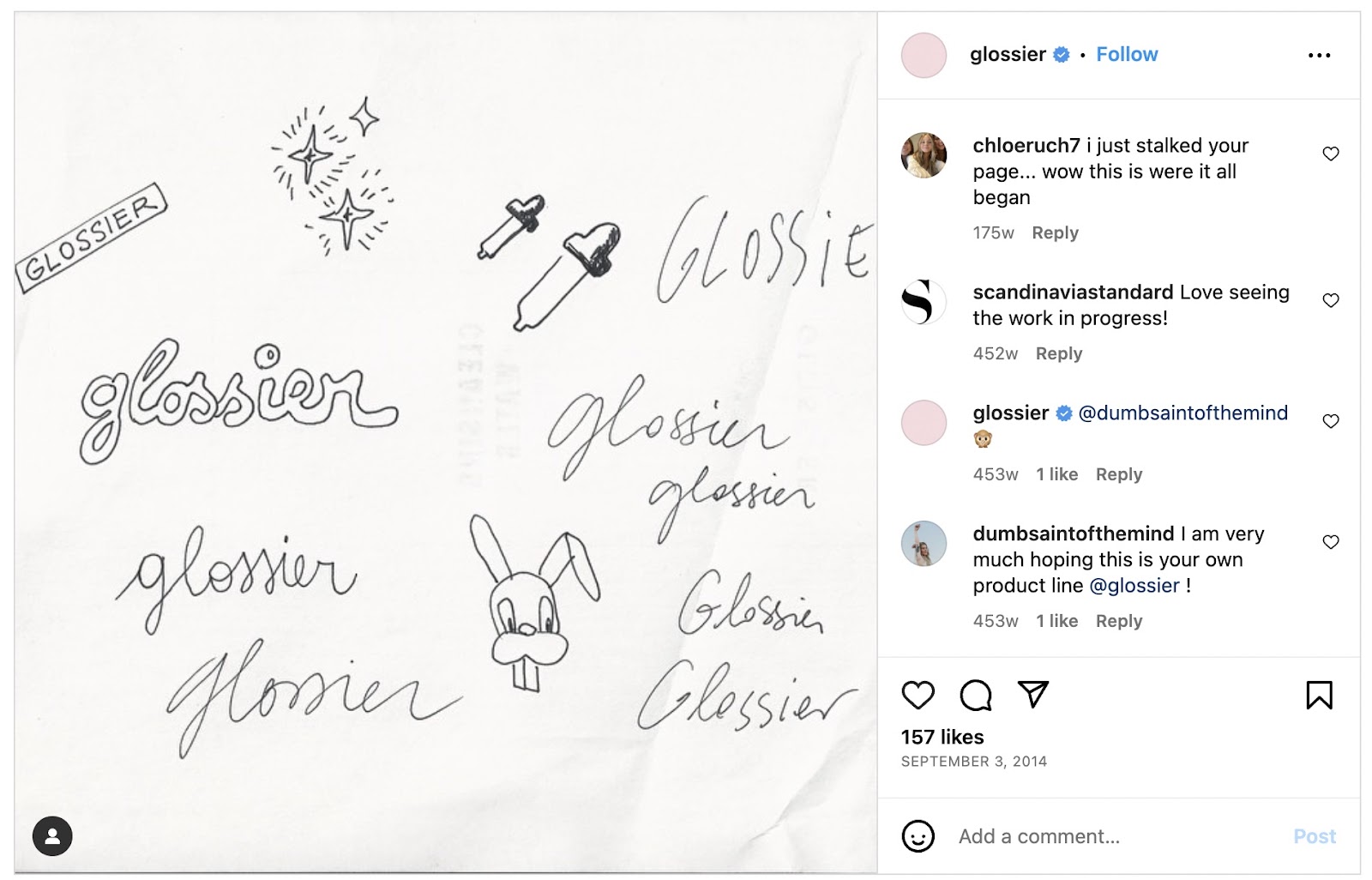
They feel authentic because they know who they are as a brand
Even as Millennial style has faded in popularity, Glossier’s pink vibe doesn’t feel like a trend that’s outlived itself. While other brands try to hop on trends past their prime (and look painfully behind the curve as a result) or drop their previously trendy aesthetics for the next big thing, Glossier just keeps chugging along with their signature look. And it works.
The reason their aesthetic has continued to resonate is that it has always felt authentic. They weren’t using it because it was trendy, they were using it because it was authentically aligned with their founder, their audience, and their product. The Glossier pink boilersuit was the pinnacle of trends at the time, but it still feels iconic because it’s rooted in the brand’s “accessible and uncomplicated” mission.
They’ve kept their core message while subtly updating their look to stay modern. Their new site is clean and sleek, with more white than pink.Their new products, like the Balm Dotcom, come in brighter shades reminiscent of Gen Z Yellow. They’ve even responded to customer feedback by adding a line of brightly colored cosmetics to complement their traditional “fresh-faced” products.
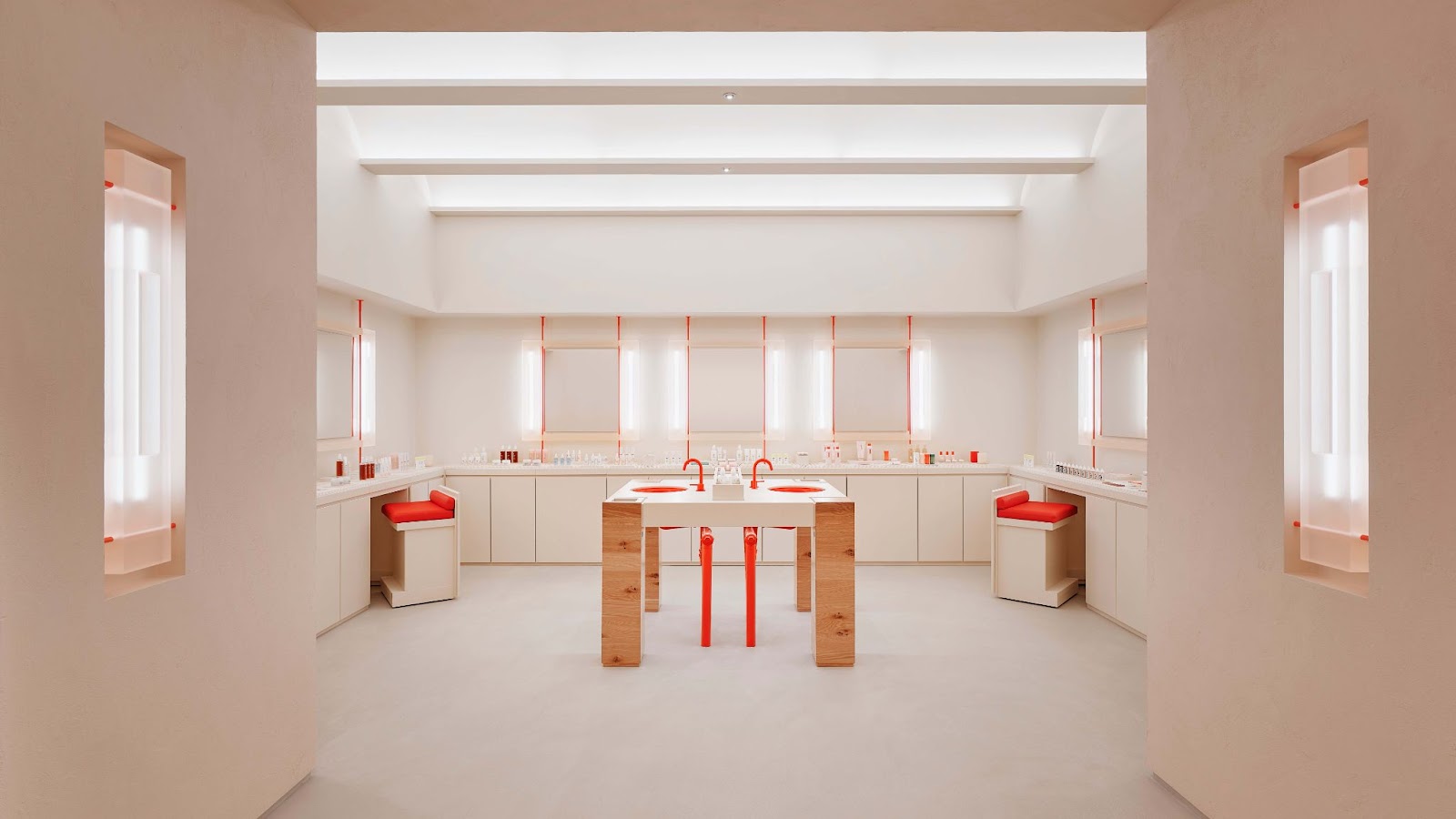
However, their newest store in Soho shows that their core identity hasn’t changed. The store mimics the look of a New York City subway station done up in pink, with benches, exposed pipes, classic subway tile, and a custom Glossier mural. For the launch, their marketing team also took over the neighboring subway station, giving it pink turnstiles and huge posters telling passengers, “You Look Good.”
This campaign shows that they still understand how social media sharing and a fun cool-girl vibe continue to be the heart of Glossier’s brand success.
Making the transition from an upstart social media brand to a beauty company with longevity
In the almost ten years that Glossier has been around, a lot of beauty brands have seen success, and a lot of trends have come and gone. However, it’s hard to name one that has had a more universal impact than Glossier.
We all still own Boy Brow or have a tube of Balm Dotcom kicking around in the bottom of a beach bag somewhere. A whopping 12% of all cosmetics users in the US still use Glossier products. And no one will ever see a pastel pink jumpsuit again without instantly thinking of Glossier.
They stuck to authentic brand identity and resisted the urge to jump on bandwagons of trends just for trends' sake, and that made all the difference. They’ve continued to actively listen to their own customer base, offering new products when it’s clear there is a demand for them.
And they kept on with the pink, outlasting not just the trend but the backlash to the trend.



















The marketer’s website
Our free ebook exclusively for marketers. Discover how no-code eliminates developer bottlenecks and empowers modern marketing teams to truly own the website.









